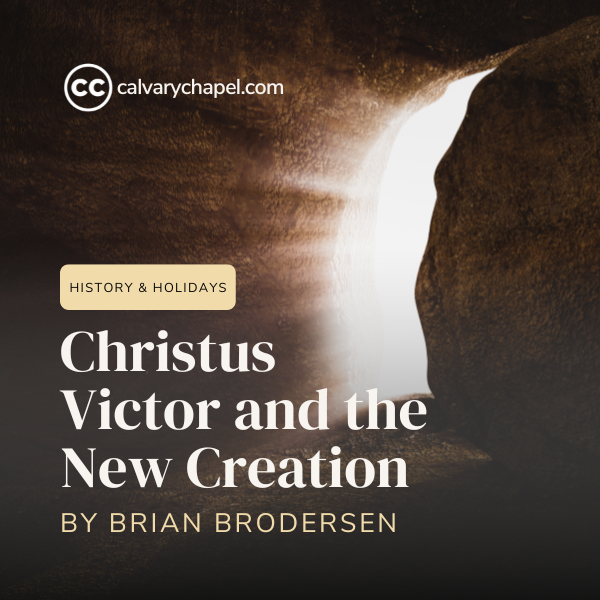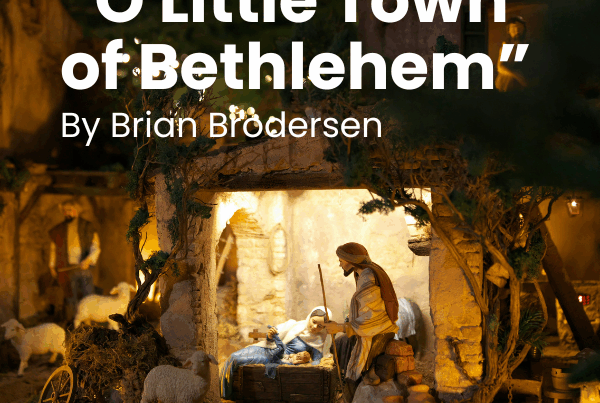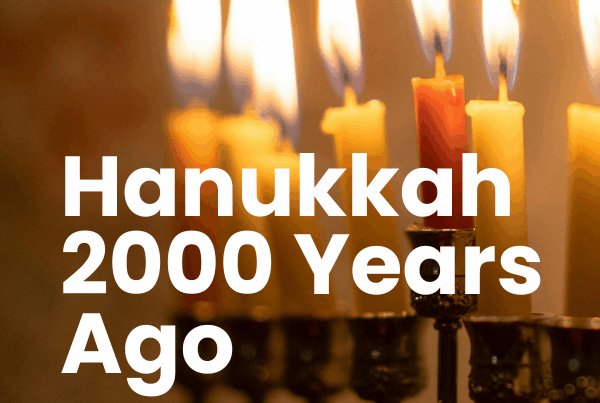
Christus Victor is the term used by many of the early church theologians—Irenaeus, Athanasius, Chrysostom, Augustine, Gregory, et al., to express the biblical teaching that through Christ’s Death and Resurrection, God defeated the powers that hold humanity in bondage—the powers of Sin, Satan, and Death. Although some theologians have argued that Christus Victor does not express the fullness of what Jesus did for us in dying and rising again from the dead, which might be true, nevertheless, what it does teach us is well worth our full attention and contemplation always, but especially during this season when we celebrate the resurrection of Christ from the dead and his, and therefore our, victor over Satan and the dark powers.
Let us look at the events of the first Easter through the lens of Christus Victor.
Sin: “He breaks the power of cancelled sin, / he sets the prisoners free” (Charles Wesley, “O for a Thousand Tongues,” 1739)
What is sin? It is a powerful and destructive principle working in every human being, inclining us toward what is wrong and hindering us from doing what we know to be right. Sin is the root source of everything that is broken in the world. Sin has caused us to be bent in on ourselves, sabotaging our own lives and often hurting the ones we love most through our selfishness. We are trapped in our sins like the addict who simultaneously hates their behavior but is powerless to break free from it.
Paul the Apostle expressed this universal dilemma like this: “I do not understand what I do. For what I want to do I do not do, but what I hate I do . . . For I do not do the good I want to do, but the evil I do not want to do—this I keep on doing . . . What a wretched man I am! Who will rescue me from this body of death?” (Romans 7:15, 19, 24).
He knows the answer: “Thanks be to God, who delivers me through Jesus Christ our Lord! (Romans 7:25a).
How did Jesus destroy sin’s power over us? Paul tells us as he continues, “He [Christ] came in the likeness of sinful flesh to be a sin offering, He condemned [judged] sin in the flesh” (Romans 8:3).
The wages of sin is death, but Jesus had no sin. Sin had no claim on him. His death condemns sin (his sinless body absorbs the blow of sin and destroys sin) and breaks its power over us so that Paul can say: “If the Spirit of him who raised Jesus from the dead is living in you, he who raised Christ from the dead will also give life to your mortal bodies because of his Spirit who lives in you” (Romans 8:11). Hallelujah!
Satan: “And the devil who deceived them was cast into the lake of fire” (Revelation 20:10)
Satan is, according to Jesus, a murderer from the beginning and the father of lies (John 8:44). The Bible further describes him as the destroyer, the deceiver, the tempter, the evil one, the wicked one. The one who brought sin and death into God’s creation. The one who oppresses, afflicts, torments, and takes humans captive to do his will. Satan is the one whose work the Son of God came to destroy.
The Cross and Resurrection were the means of his destruction of the devil; they are two sides of the same coin.
Paul the Apostle, in speaking of Jesus’ death on the cross, wrote: “He canceled the record of the charges against us and took it away by nailing to the cross. In this way, he disarmed the spiritual rulers and powers. He shamed them publicly by his victory over them on the cross” (Colossians 2:14, 15).
The author of the letter to the Hebrews expresses a similar thing: “Inasmuch as the children have partaken in flesh and blood, He himself likewise shared in the same, that through death He might destroy him who had the power of death, that is, the devil . . .” (Hebrews 2:14, 15).
The devil was defeated at the cross, and we await the day of his final destruction, as Martin Luther reminded us: “The prince of darkness grim, / we tremble not for him; / his rage we can endure, / for lo! his doom is sure; / one little word shall fell him” (“A Mighty Fortress,” 1529).
Death: “O Death, I will be your plagues! O Grave, I will be your destruction!”
Death, the enemy of all mankind, the shadow cast over all peoples, the great spoiler of life, has been spoiled. “O Death, I will be your plagues! O Grave, I will be your destruction! (Hosea 13:14).
In the Book of Revelation, the Apostle John writes of his vision of the glorified Christ. He says, “Then I turned to see the voice that spoke with me. And having turned I saw seven golden lampstands, and in the midst of the seven lampstands one like the Son of Man, clothed with a garment down to the feet and girded about the chest with a golden band. His head and hair were white like wool, as white as snow, and His eyes like a flame of fire; His feet were like fine brass, as if refined in a furnace, and His voice as the sound of many waters; He had in His right hand seven stars, out of His mouth went a sharp two-edged sword, and His countenance was like the sun shining in its strength. And when I saw Him, I fell at His feet as dead. But He laid his right hand on me, saying to me, ‘Do not be afraid, I am the First and the Last. I am he who lives and was dead., and behold, I am alive forevermore. Amen. And I have the keys of Hell and Death.’” (Revelation 1:12-18, emphasis mine).
Christ is the victor! He has defeated Sin, Satan, and Death.
If that is so, some might say, why are people still dying—my precious loved one, my dear friend? They are not dead! Jesus said if you live and believe in me, you will never die. Their bodies have temporarily ceased living, just like the body of Jesus ceased living during the three days and three nights he was in the tomb. But their spirits are present with the Lord and will one day be reunited with their glorified bodies. Just as Jesus’s spirit was reunited with his body—his glorified body.
The victory of Christ is peace to those who believe. “My peace I give you,” Jesus said (John 14:27).
The victory of Christ is victory for me and victory for you, for all who believe. But it is so much bigger than that. What Jesus did through his death and resurrection has cosmic ramifications that were seen ever so faintly on that first day of the week.
G.K. Chesterton described it so beautifully: “On the third day the friends of Christ coming at daybreak to the place found the grave empty and the stone rolled away. In varying ways, they realized the new wonder; but even they hardly realized that the world had died in the night. What they were looking at was the first day of the new creation, with a new heaven and a new earth; and in a semblance of the gardener God walked again in the garden, in the cool not of the evening but the dawn” (The Everlasting Man, 1925).
Happy Easter! Happy New Creation!







